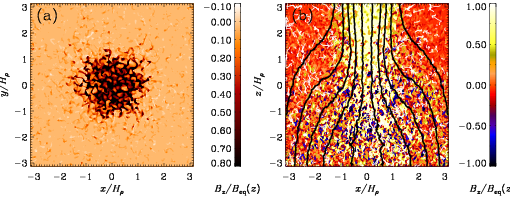 |
|
Astrophysical and Planetary Sciences Colloquium
Tuesday, April 14, 2015 at 4:00pm JILA Auditorium Axel Brandenburg, Nordita "Rethinking basic concepts of solar convection and sunspot formation"  Abstract:Already moderately sized telescopes reveal the existence of convection in the form of a time-dependent granula- tion pattern. In the 1930s, Martin Schwarzschild and others applied the stability criterion of Karl Schwarzschild to find that hydrogen ionization is chiefly responsible for creating a convectively unstable layer, perhaps several hundred kilometers thick. With the advent of so-called mixing length theory and the discovery of an enormously important opacity owing to the formation of a loosely bound negative ion of hydrogen, H −, this picture has changed tremendously: the thickness is now 200,000 km and this is well confirmed by helioseismology. However, in spite of advanced local and global simulations, which give insight into detailed flow properties, a number of discrepancies with solar observations have not gone away. On top of this, recent helioseismic observations give upper limits on the flow speeds of large convection cells that are far below those of simulations and mixing length theory. In my talk, I will revive an old concept of Spruit of the 1990s, according to which the observed granulation represents the largest lengths scale in all of the convection zone. Unlike conventional belief, the scale of the turbulence would not increase with depth like the pressure scale height. I will suggest a possible basis for this rather unconventional proposal, explain possible deficiencies of current simulations, and show how in this new picture several other pieces of the puzzle of solar activity phenomena might fall into place. This includes a new theory of sunspot formation via the so-called negative effective magnetic pressure instability, which predicts the formation of magnetic spots in strongly stratified turbulence of the type suggested by Spruit (1997). The figure above shows the self-assembly of a magnetic spot in a simulation of strongly stratified turbulence with length scales that are small compared with the local pressure scale height. References: Brandenburg, A., Kleeorin, N., & Rogachevskii, I.: 2013, “Self-assembly of shallow magnetic spots through strongly stratified turbulence,†Astrophys. J. Lett. 776, L23; Spruit, H.: 1997, “Convection in stellar envelopes: a changing paradigm,†Mem. Soc. Astron. Ital. 68, 397–413 Figure: Self-assembly of a magnetic spot in a numerical simulation of strongly stratified turbulence. Cuts of the vertical magnetic field in the horizontal plane at the top boundary (a), and a vertical plane through the middle of the spot (b), showing also magnetic field lines and flow vectors obtained by numerically averaging in azimuth around the spot axis. Taken from Brandenburg et al. (2013).
|